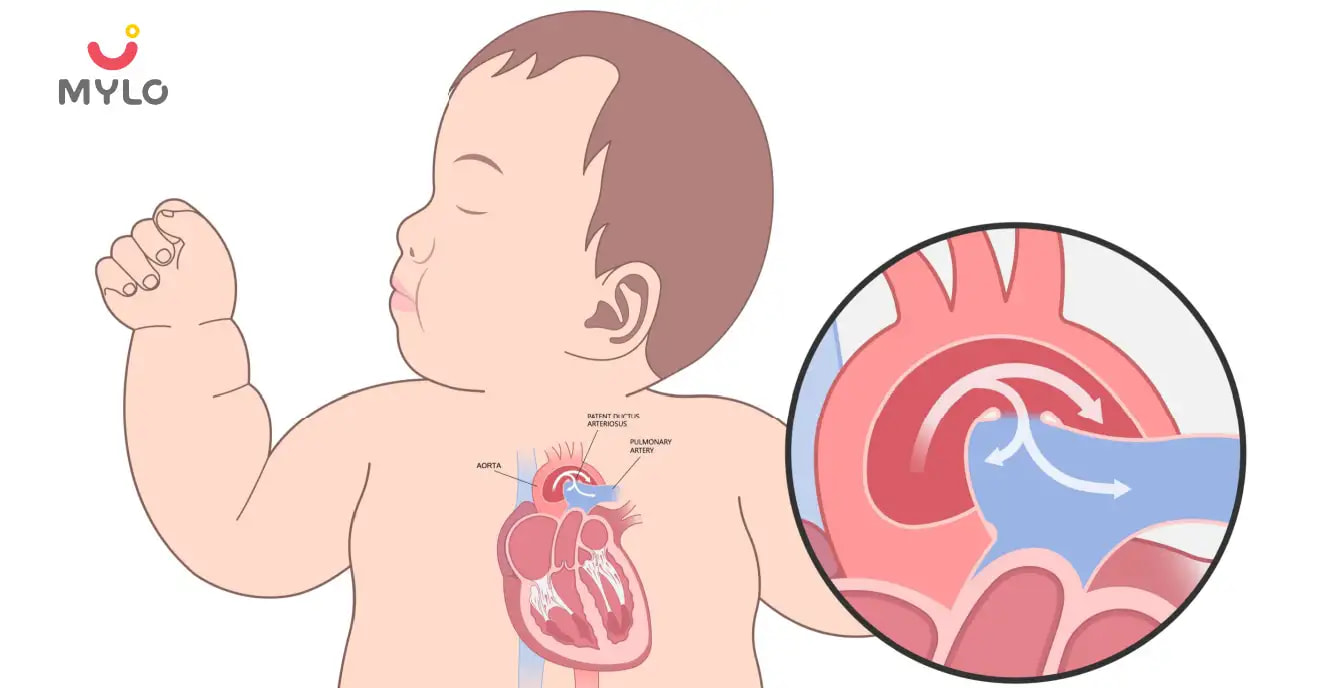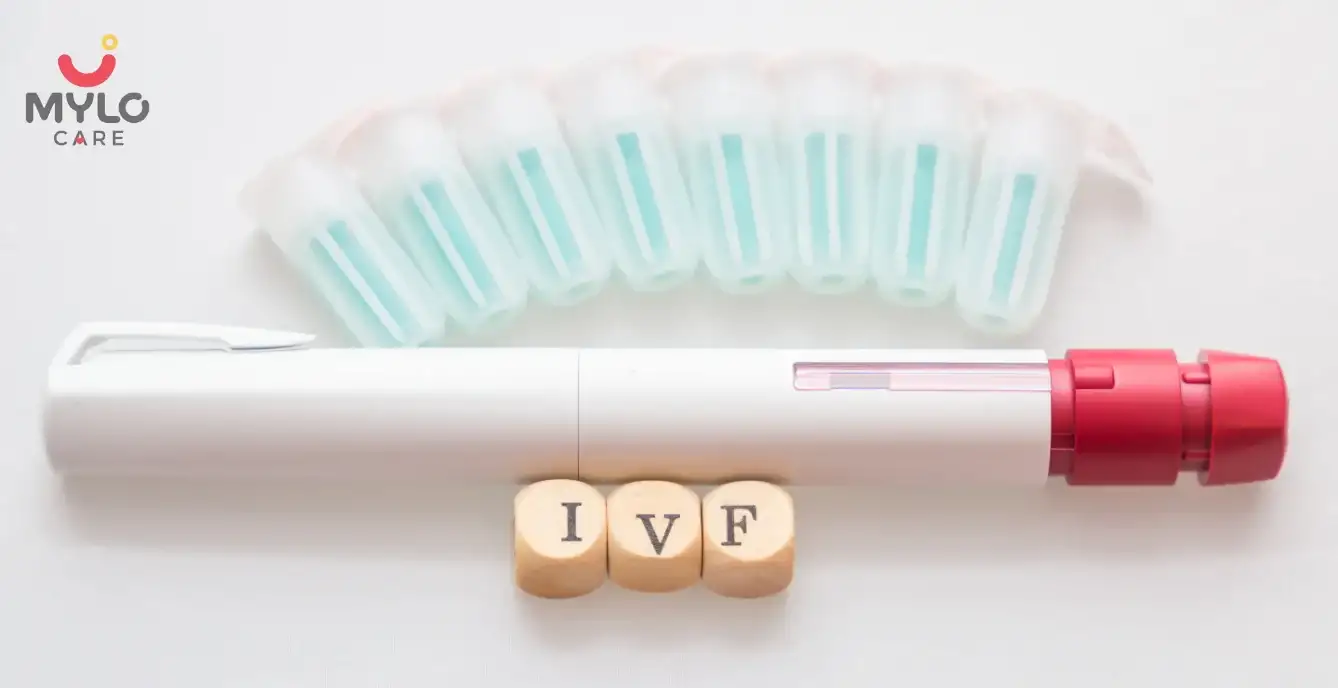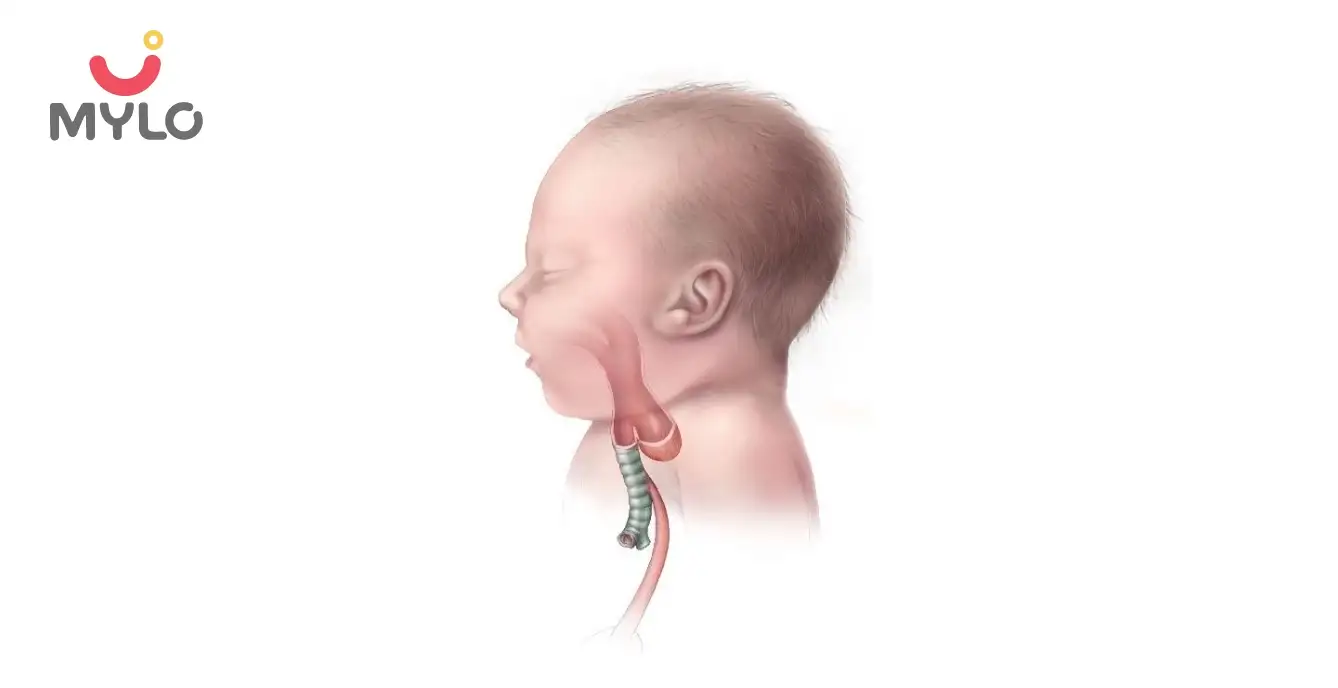Home

Symptoms & Illnesses

Patent Ductus Arteriosus (PDA) Symptoms & Treatment
In this Article

Symptoms & Illnesses
Patent Ductus Arteriosus (PDA) Symptoms & Treatment
Updated on 18 May 2023
Patent Ductus Arteriosus (PDA) is a heart disorder that affects some babies, more often, those born prematurely. PDA causes problems with blood flow between the heart and lungs. However, it sometimes resolves on its own, and when it doesn't, doctors treat PDA and restore regular blood circulation with medication, catheterization, and surgery.
What Is Patent Ductus Arteriosus (PDA)?
Patent ductus arteriosus is a persistent opening between the two major blood vessels operating from the heart. The beginning of the blood vessel (ductus arteriosus) is a normal part of a baby's circulatory system in the womb that usually shuts shortly after birth. If it remains open, it is called patent ductus arteriosus.
Symptoms and signs can be severe or mild. In rare circumstances, the defect can go undetected and exist in adulthood. In a normally functioning heart, the pulmonary artery sends blood to the lungs to receive oxygen. The oxygenated blood then transmits through the aorta to the rest of the body.
A blood vessel called the ductus arteriosus binds the aorta and pulmonary artery in the womb. It enables blood to flow from the pulmonary artery to the aorta and out of the body without going through the lungs. The developing fetus receives oxygenated blood from the mother, not its lungs. Soon after the baby's birth, the ductus arteriosus should close to avoid mixing oxygen-poor blood from the pulmonary artery with oxygen-rich blood from the aorta. When this doesn't happen, the baby develops a patent ductus arteriosus(PDA).
What Occurs In Infants Who Have A Patent Ductus Arteriosus?
The ductus arteriosus doesn't close properly when an infant has a PDA. A tiny opening is left behind, which enables extra blood from the aorta to penetrate the baby's lung arteries. Depending on the size of this blood vessel, your baby's heart and lungs may struggle harder to pump blood.
Who Is Affected By PDA?
Babies born prematurely are more likely to develop PDA. Also, the condition is more common in girls when compared to boys.
How Frequent Is PDA?
Patent ductus arteriosus is the most common heart disorder in newborns. Doctors interpret the condition more often in premature babies. Also, the risk increases the earlier the baby is born. PDA occurs in about:
-
10% of babies are born between 30 and 37 weeks of pregnancy.
-
80% of babies are born between 25 and 28 weeks of pregnancy.
-
90% of babies are born earlier than 24 weeks of pregnancy.
How Would PDA Affect My Baby?
A moderate or significant PDA can cause babies to breathe faster and harder than usual as their bodies try to keep up with the extra blood in their lung arteries. If left treated for a prolonged period, a PDA can also result in the development of pulmonary hypertension (high blood pressure in the lungs and blood vessel damage).
Causes Of Patent Ductus Arteriosus?
Congenital heart defects arise from problems early on in the heart's development. However, there is no exact cause of why this condition occurs. Patent ductus arteriosus causes may include genetic disorders or a family history of the disease. Some other PDA causes may consist of the following:
- German measles during pregnancy: Babies born to mothers who carry rubella(German measles) may have a greater risk of a PDA.
- Neonatal respiratory distress syndrome: Babies whose lungs didn't receive enough lubricating substance( surfactant) before birth may develop neonatal respiratory distress syndrome, a breathing disorder, and these babies may also create a PDA.
- PDA occurs more often in babies who are born prematurely than in those who are born full term
- PDA affects twice as many girls compared to boys.
- If you have a family history of heart problems or disorders that affect your genes, like Down syndrome, your baby is more likely to develop PDA.
Symptoms Of Patent Ductus Arteriosus?
Patent ductus arteriosus symptoms may vary with the size of the defect and whether the baby is premature or born full-term. A minor PDA might induce no signs or symptoms and can go undetected for some time, even until adulthood. However, a significant PDA can show signs of heart failure soon after birth. Your baby's doctor might first suspect a heart defect during a routine checkup after hearing the murmur while listening to your baby's heart through a stethoscope. Large PDAs might cause:
- Rapid breathing
- Shortness of breath
- Sweating during feedings
- Fatigue or tiredness
- Feeding and eating issues.
- Poor weight gain leads to poor growth.
- It leads to a fast pulse or heart rate.
You may like: Congenital Heart Disease: Symptoms, Causes & Treatment
How Can Medical Professionals Diagnose PDA?
Suppose you notice any signs or symptoms of a PDA in your baby. Your doctor may hear a patent ductus arteriosus heart murmur during a routine baby care visit or a physical examination.
What Tests Are Used By Doctors To Diagnose Patent Ductus Arteriosus?
If your doctor suspects PDA, they may recommend a visit to a specialist or a pediatric cardiologist. The pediatric cardiologist may order specific tests, which include:
1. Chest X-ray:
This helps the doctor to check the condition of your baby's heart and lungs.
2. Echocardiogram:
An echocardiogram is a test that uses sound waves to establish a picture of the baby's heart. It is painless and enables the doctor to see the size of your baby's heart and check if there is any abnormality in blood flow. An echocardiogram is the most common technique used to diagnose PDA.
3. Electrocardiogram:
An electrocardiogram records the heart's electrical activity and detects irregular heart rhythms. This test can also be used to identify enlarged hearts in babies.
4. Cardiac catheterization:
The doctor injects a long, flexible tube, called a catheter, into a vein and steers it into the heart.
5. Cardiac magnetic resonance imaging:
This test obtains pictures of a baby's heart using radio waves, magnets, and a computer to detect any heart condition.
Treatment For Patent Ductus Arteriosus?
In cases where the opening of the ductus arteriosus is minor, no treatment may be necessary. The gap generally closes as the baby grows older. However, the doctor will want to monitor the PDA as the baby grows in some cases. Medication or surgical procedures might be necessary to avoid complications if it doesn't complete on their own. PDA treatment varies from person to person. Some of the patent ductus arteriosus treatment includes:
1. Medication:
In a premature baby, a drug called indomethacin can assist in closing the opening in PDA. When given intravenously, this medication can restrict muscles and shut off the ductus arteriosus. This type of treatment is generally only effective in newborns. However, in older infants and children, further treatment may be essential. And these medications might not be suitable for all babies.
2. Catheter-based procedures:
In an infant or a child with a minor PDA, your doctor may propose a "transcatheter device closure" procedure, according to the National Heart, Lung, and Blood Institute. This technique is outpatient and does not involve opening the child's chest. A catheter is a thin, flexible tube inserted through a blood vessel beginning in the groin and placed on to your child's heart. A blocking device is inserted through the catheter and placed in the PDA. The device blocks the blood flow through the vessel and returns regular blood flow.
3. Surgical treatment or surgical litigation:
If the opening is large or ot doesn't close, surgery may be required to correct the defect. This kind of treatment is typically only for children six months or older. However, younger babies can have this treatment if they develop symptoms. Your doctor may prescribe antibiotics for surgical procedures to avoid bacterial infection after hospital discharge.
Are There Any Additional Risks Related To PDAs?
Most cases of PDA are diagnosed and treated shortly after birth. It is unusual for PDAs to go undiscovered into adulthood. The larger the opening is, the worse the risks and complications. However rare, untreated adult PDA can result in other medical conditions in adults, such as:
- Shortness of breath or heart palpitations.
- Pulmonary hypertension, or increased blood pressure, can damage the lungs.
- Endocarditis, or inflammation of the heart's lining due to a bacterial infection( individuals with structural heart defects are at a higher risk of disease).
In very severe cases of untreated PDA, excess blood flow can eventually increase the size of the heart, weakening the muscle and its ability to pump blood effectively, which can result in congestive heart failure and death.
How Can I Prevent My Child From Getting Patent Ductus Arteriosus?
There is nothing you can do to prevent PDA. However, most babies born with PDA can live healthy and active lives with treatment.
Summary
Treatment for this condition can work well if detected early. If your baby doesn't have other complications, you can expect them to eat and grow typically soon after it's closed. Most infants will completely recover without experiencing any PDA-related difficulties or risks. Also, speak to your doctor about how often your child will require a checkup.



Written by
Khushboo Jain
Get baby's diet chart, and growth tips

Related Articles
Related Questions
Influenza and boostrix injection kisiko laga hai kya 8 month pregnancy me and q lagta hai ye plz reply me

Hai.... My last period was in feb 24. I tested in 40 th day morning 3:30 .. That is faint line .. I conculed mylo thz app also.... And I asked tha dr wait for 3 to 5 days ... Im also waiting ... Then I test today 4:15 test is sooooo faint ... And I feel in ma body no pregnancy symptoms. What can I do .

Baby kicks KB Marta hai Plz tell mi

PCOD kya hota hai

How to detect pcos

Related Topics
RECENTLY PUBLISHED ARTICLES
our most recent articles

Care for Baby
Why Babies Cry After Birth?

In Vitro Fertilization (IVF)
IVF Process Step by Step Timeline: What to Expect During Your Fertility Journey

Symptoms & Illnesses
Tracheoesophageal Fistula: Causes, Symptoms, Risks & Treatment

Growth & Development
Stillbirth: Cause, Symptoms, Risks & Prevention

skin care
Giant Congenital Melanocytic Nevus: Causes, Symptoms, & Treatment

Fears & Phobias
Tokophobia: How to Manage Your Phobia of Pregnancy & Childbirth
- Low BP in Pregnancy: Symptoms, Effects & Treatments
- Helping your twins to sleep at the same time
- Baby Brain Development: What You Should Know
- Tummy Tuck (Abdominoplasty) Procedure, Risks, Preparation & Recovery
- Spina Bifida: Causes, Symptoms & Treatment
- Diastasis Recti: Causes, Symptoms, Risks & Preventions
- Opioid Overdose, Risk & Prevention
- Is Pregnancy After 35 Right for You? A Comprehensive Guide
- Clubfoot (Talipes Equinovarus): Meaning, Symptoms & More
- RSV (Respiratory Syncytial Virus): Symptoms, Causes & Treatment
- Loose Vagina: Learn How To Tighten Your Vagina Naturally
- Umbilical Cord Prolapse Causes, Symptoms & Treatment
- Bipolar Disorder: Causes, Symptoms, Risks & Treatment
- Sinus Infection During Pregnancy Causes & Treatment


AWARDS AND RECOGNITION

Mylo wins Forbes D2C Disruptor award

Mylo wins The Economic Times Promising Brands 2022
AS SEEN IN
















- Mylo Care: Effective and science-backed personal care and wellness solutions for a joyful you.
- Mylo Baby: Science-backed, gentle and effective personal care & hygiene range for your little one.
- Mylo Community: Trusted and empathetic community of 10mn+ parents and experts.
Product Categories
baby carrier | baby soap | baby wipes | stretch marks cream | baby cream | baby shampoo | baby massage oil | baby hair oil | stretch marks oil | baby body wash | baby powder | baby lotion | diaper rash cream | newborn diapers | teether | baby kajal | baby diapers | cloth diapers |








